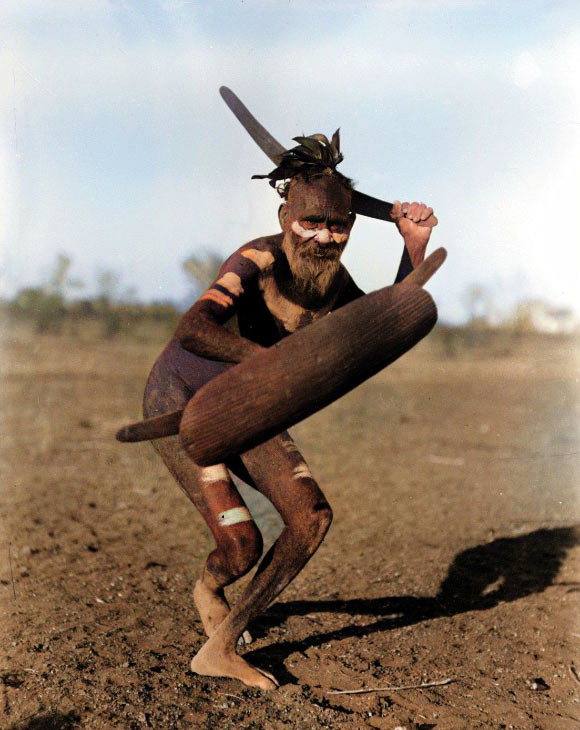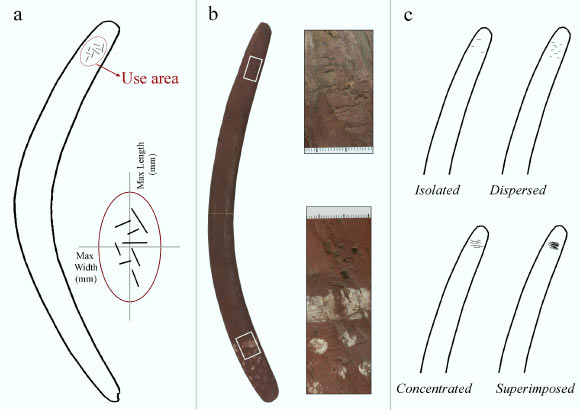New research by Griffith University and University of Cape Town scientists provides the first traceological evidence of multipurpose nature of Australian hardwood boomerangs.

Australian Luritja man demonstrating method of attack with boomerang under cover of shield, c. 1920. Image credit: National Museum of Australia.
“Australian lithic assemblages contain a great number of retouched tools,” said lead author Eva Martellott from the Australian Research Centre for Human Evolution at Griffith University and her colleagues.
“Despite this fact, however, material evidence for, and studies, on the retouching tools utilised to create these technologies are limited, especially regarding their use in percussion retouch.”
“Indirect evidence found in ethnographic literature suggests that wooden items — specifically boomerangs — were frequently utilised as retouchers.”
In the study, the researchers analyzed microscopic traces on the surfaces of 100 ancient boomerangs from across each Australian state and territory.
By using a traceological method, they were able to more clearly see what tasks the boomerangs were used for by Aboriginal Australians in the past.

Retouch-induced marks were identified on 26% of the boomerangs examined by Martellotta et al. and were comparable to those traces observed on the surfaces of ancient European bone retouchers. Image credit: Martellotta et al., doi: 10.1016/j.jasrep.2021.102967.
“Not all boomerangs come back. Most are used for hunting and fighting purposes, whereas the returning ones are often children’s toys or used for games and learning purposes,” Martellotta said.
“We found specific marks related to the shaping of stone tools.”
“These marks are not new in archaeology — they are also identified on bone fragments in archaeological sites in Europe.”
“Here, the Neanderthals used them to modify the shape of stone tools, starting 500,000 years ago.”
“Our findings constitute the first traceological identification of hardwood boomerangs being used for shaping stone tools in various Aboriginal Australian contexts and emphasises the multipurpose nature of daily tools like boomerangs in Aboriginal culture.”
The findings were published in the Journal of Archaeological Science: Reports.
_____
Eva Francesca Martellotta et al. 2021. New data from old collections: Retouch-induced marks on Australian hardwood boomerangs. Journal of Archaeological Science: Reports 37: 102967; doi: 10.1016/j.jasrep.2021.102967
Source: sci-news.com
 Archeology News Archeology News
Archeology News Archeology News






